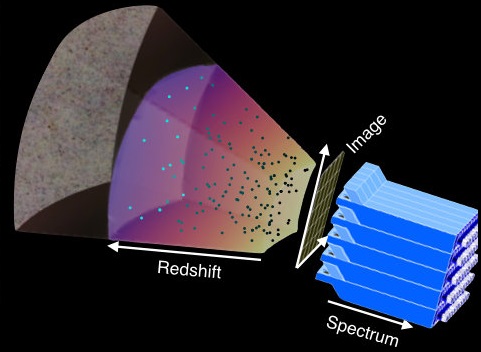Multi Object Spectrometer with an Array of superconducting Integrated Circuits (MOSAIC)
With his group, Jochem Baselmans will work on the development, construction and commissioning of MOSAIC (Multi Object Spectrometer with an Array of superconducting Integrated Circuits). MOSAIC will be a revolutionary instrument that can simultaneously measure the emission spectrum of 25 submillimeter galaxies over a considerable bandwidth. Current instruments cannot do this and that makes a systematic study of the enormous number of submillimeter galaxies an impossible task.
Baselmans: "Submillimeter galaxies emit radiation at wavelengths between infrared and radio waves and are responsible for the cosmic infrared background radiation. We know very little about these galaxies because we cannot observe these in other wavebands. MOSAIC enables us to simultaneously measure detailed spectra of many of these galaxies in the submillimeter waveband, which will enable us to learn about the evolution of galaxies and to measure the distance to these galaxies."
The heart of MOSAIC consists of an array of 25 pixels that capture submillimeter radiation in the frequency area of 325-905 GHz. Each pixel has antenna, which is able to adjust the direction of observation. MOSAIC is therefore able to direct each pixel independently at individual galaxy (A). Behind the antennae there is a high-resolution spectrometer that (R=500) measures the spectrum of the galaxy (B). The heart of MOSAIC consists of an array of 25 pixels that capture submillimeter radiation in a frequency area of 325-905 GHz. Each pixel has an antenna, which is capable of adjusting the direction of observation. This enables MOSAIC to independently direct each pixel at an individual galaxy. Behind the antennae there is a high-resolution spectrometer (R=500) that measures the spectrum of the galaxy. All of these functionalities have been combined in a single chip, which is based on superconducting nanotechnology. This is what makes MOSAIC technologically possible and unique.
MOSAIC will be developed in a collaboration between SRON, Delft University of Technology and the Leiden Observatory. The observations will be made at the Japanese telescope ASTE in Chile.

Project data
| Researchers: | Alejandro Pascual Laguna, Sebastian Hähnle, Jochem Baselmans |
|---|---|
| Starting date: | September 2017 |
| Closing date: | February 2022 |
| Sponsor: | ERC |
| Contact: | Jochem Baselmans |